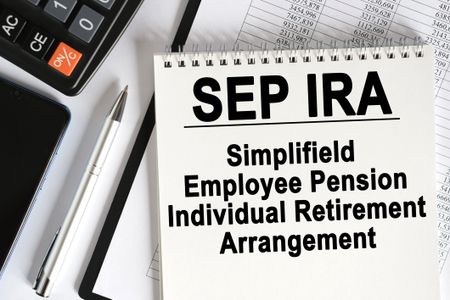Your Retirement Action Plan
A decade-by-decade guide to getting back on track.

Now that the shock of one of the worst stock-market declines in history is beginning to fade, it's time to reassess where you stand. Here's a breakdown of the steps you should take at each life stage to get back in the driver's seat. Depressed stock prices present an enormous buying opportunity for young and mid-career workers, but near-retirees may need to reassess their investment strategy and timetable.
IN YOUR 20s-30s: Get started
Sign up for your employer's 401(k) plan (or don't opt out if you're automatically enrolled).

Sign up for Kiplinger’s Free E-Newsletters
Profit and prosper with the best of expert advice on investing, taxes, retirement, personal finance and more - straight to your e-mail.
Profit and prosper with the best of expert advice - straight to your e-mail.
Contribute at least enough to capture your employer's match.
Boost your contribution by 1% per year or more. Ultimately, your goal should be to save 15% of your salary, including the employer match.
Make sure you're invested appropriately. With decades ahead to save, you can afford more risk. Load up on stocks that are cheap in today's market.
Take advantage of the retirement savers tax credit if you're eligible. It's worth up to $1,000 if you're single with an income of $27,750 or less. If you're married with an income of $55,500 or less, you and your spouse can each claim the credit. That's on top of the usual upfront tax breaks for 401(k) and IRA contributions.
IN YOUR 40s: Plan and save
Max out contributions to your 401(k) or similar work-based savings plan ($16,500 in 2009).
Contribute to a spousal IRA if you have a stay-at-home spouse and file jointly. The limit is $5,000 in 2009.
Lock in future tax-free retirement income by contributing to a Roth IRA. To be eligible, your income can't exceed $120,000 if you are single or $176,000 if you are married. You may have a Roth 401(k) option at work with no income-eligibility limit.
Get advice. Increasingly, retirement-plan administrators are offering personal guidance to help you set and monitor your retirement-savings goals. Or check TD Ameritrade's new WealthRuler tool or Fidelity's My Plan.
IN YOUR 50s: Stay focused
Take advantage of catch-up contributions that allow workers 50 and older to contribute up to $22,000 to their 401(k) and up to $6,000 to a traditional or Roth IRA in 2009.
Get a financial checkup. You still have time to make up for any shortfalls by saving more, investing smarter or working longer. Find a planner through the Financial Planning Association or the National Association of Personal Financial Advisors.
Ask whether you can take "in-service" distributions through your 401(k) plan, which allow you to transfer funds to an IRA while you're still working, giving you greater control over your investments.
Plan to pay off your mortgage before you retire even if you must tap other sources of cash, such as unneeded life insurance.
IN YOUR 60s+: Take a test drive
Give your retirement budget a trial run by living on less and saving what's left over.
Develop a plan for turning your accumulated savings into retirement income for life -- such as buying an immediate annuity to create guaranteed income.
Investigate your health-care options. You'll need insurance if you retire before you're eligible for Medicare at 65, and you'll still need to supplement your coverage after that.
Work longer and delay claiming Social Security benefits -- until age 66 or laterÑto maximize income. Get a personalized estimate of your benefits at www.ssa.gov/estimator.
Front-load your 401(k) contributions if you expect to retire before the end of the year.
Get Kiplinger Today newsletter — free
Profit and prosper with the best of Kiplinger's advice on investing, taxes, retirement, personal finance and much more. Delivered daily. Enter your email in the box and click Sign Me Up.

-
 Stagflation: What It Is and Why Retirees Should Care
Stagflation: What It Is and Why Retirees Should CareStagflation — the economic bogeyman of the 1970's — may return to the US. Here's what it could mean to your retirement.
By Donna Fuscaldo Published
-
 Why Losing Your Job Could Be the Best Opportunity to Plan Your Future
Why Losing Your Job Could Be the Best Opportunity to Plan Your FutureAmid this uncertainty lies an opportunity for strategic reassessment and personal growth.
By Mario Hernandez Published
-
 457 Plan Contribution Limits for 2025
457 Plan Contribution Limits for 2025Retirement plans There are higher 457 plan contribution limits for state and local government workers in 2025. That's good news for state and local government employees
By Kathryn Pomroy Last updated
-
 Medicare Basics: 11 Things You Need to Know
Medicare Basics: 11 Things You Need to KnowMedicare There's Medicare Part A, Part B, Part D, Medigap plans, Medicare Advantage plans and so on. We sort out the confusion about signing up for Medicare — and much more.
By Catherine Siskos Last updated
-
 The Seven Worst Assets to Leave Your Kids or Grandkids
The Seven Worst Assets to Leave Your Kids or Grandkidsinheritance Leaving these assets to your loved ones may be more trouble than it’s worth. Here's how to avoid adding to their grief after you're gone.
By David Rodeck Last updated
-
 SEP IRA Contribution Limits for 2025
SEP IRA Contribution Limits for 2025SEP IRA A good option for small business owners, SEP IRAs allow individual annual contributions of as much as $69,000 in 2024 and $70,000 in 2025..
By Jackie Stewart Last updated
-
 Roth IRA Contribution Limits for 2025
Roth IRA Contribution Limits for 2025Roth IRAs Roth IRA contribution limits have gone up. Here's what you need to know.
By Jackie Stewart Last updated
-
 SIMPLE IRA Contribution Limits for 2025
SIMPLE IRA Contribution Limits for 2025simple IRA The SIMPLE IRA contribution limit increased by $500 for 2025. Workers at small businesses can contribute up to $16,500 or $20,000 if 50 or over and $21,750 if 60-63.
By Jackie Stewart Last updated
-
 457 Contribution Limits for 2024
457 Contribution Limits for 2024retirement plans State and local government workers can contribute more to their 457 plans in 2024 than in 2023.
By Jackie Stewart Published
-
 Roth 401(k) Contribution Limits for 2025
Roth 401(k) Contribution Limits for 2025retirement plans The Roth 401(k) contribution limit for 2025 increased, and workers who are 50 and older can save even more.
By Jackie Stewart Last updated